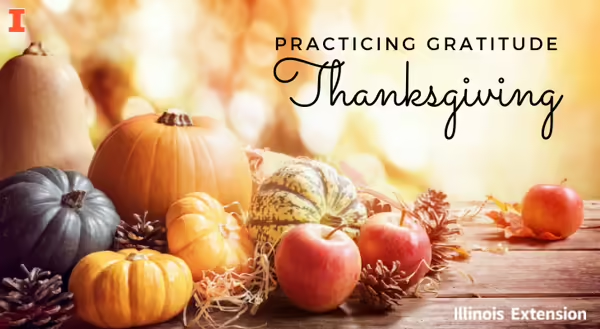
What’s your favorite holiday? Mine is Thanksgiving…hands down. I mean, how could it not be? It’s a simple celebration focused on good food, time with family, and the harvest. And if that wasn’t enough, it celebrates a powerful way to encourage good mental and physical health: Gratitude.
The benefits of gratitude are well documented in the research. Practicing gratitude increases optimism and happiness while decreasing the risk of anxiety, depression, and substance abuse. It helps build stronger relationships and social connections. It decreases blood pressure and increases sleep efficiency and immune function. Giving thanks is good for us!
On Thanksgiving, many families go around the table and have everyone at the gathering say something they’re thankful for. While this tradition is a lovely and heartfelt expression of thankfulness, there are many other ways to practice gratitude on Thanksgiving and throughout the year.
- Start a gratitude journal. Everyday, write down several things that you’re grateful for. These may be simple pleasures, good memories, an event that happened during the day, or anything for which you’re thankful.
- Mind your manners. Create a culture of gratitude in your family that moves beyond the niceties of, “What do you say?” followed by a hurried, “Thanks!” as your child heads out of the room. Instead, model authentic gratitude by looking a person in the eye as you thank them and telling them precisely why you’re thankful.
- Write a thank you note. Compose a letter to someone who has impacted your life in a positive way. Whether you send it or not, this action can have lasting effects on your well-being.
- Pray or meditate. Send thanks to a higher power or focus your thoughts and energy on what you’re grateful for.
- Reflect on the first Thanksgiving, and gratefully acknowledge the efforts and sacrifice of those involved*. Explore aspects of the First Thanksgiving that you may not have learned in school from this New York Times article.
If you want to learn more:
- Being Grateful is Good for You – Illinois Extension
- Giving Thanks Can Make You Happier – Harvard Health Publishing
- Gratitude is Good Medicine – UC Davis Health
- How Gratitude Changes You and Your Brain – Greater Good Science Center
- Practicing Gratitude Can Have Profound Health Benefits – USC News
*We would like to recognize and acknowledge that the U of I System carries out its mission in its namesake state, Illinois, which includes ancestral lands of the Peoria, Kaskaskia, Piankashaw, Wea, Miami, Mascoutin, Odawa, Sauk, Mesquaki, Kickapoo, Potawatomi, Ojibwe, and Chickasaw Nations. We have a responsibility to acknowledge these Native Nations and to work with them as we move forward as a vibrant, inclusive institution. Read our full Land Acknowledgement.
MEET THE AUTHOR
Emily Schoenfelder joined the Illinois 4-H team in 2017. Prior to this, she began her work in positive youth development with California 4-H and the YMCA. She specializes in STEM engagement, social-emotional development, and educator professional development.
She received a Master of Science degree in recreation, park, and tourism administration from Western Illinois University.
When she is not writing curriculum or facilitating a training, you may find Emily sitting on the floor of her office, building marshmallow catapults out of popsicle sticks or designing mazes for robots for her next STEM program.
ABOUT THE BLOG
Connection Corner is a blog that provides timely information, activities, and resources to help you stay connected to loved ones, the world around you, and yourself.